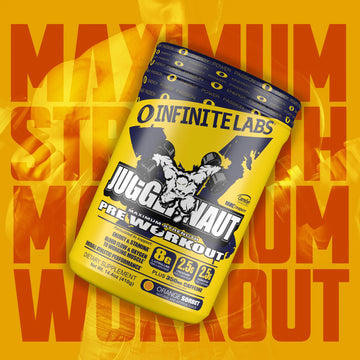

Lose the Fat, Not the Muscle
Table of Contents
Lose the Fat, Not the Muscle!
by: Robbie Durand
When you’re trying to lose body fat, in addition to dieting, training, and supplementation, doing cardio is essential for stripping off those last few layers of fat. The problem that most bodybuilders have is they often over diet and do excess cardio that can give the muscle a flat and stringy look.
Bodybuilders want to keep muscle, while losing body fat during the last few weeks before a competition. To lose body fat, more energy must be expended than consumed. Bodybuilders normally accomplish this by increasing their cardio and reducing their calories. In a rare study of bodybuilders published in JISSN, during a twelve-week diet before a bodybuilding competition, male competitors reduced their caloric intake significantly during the last few weeks of the diet as the competition approached, they lost fat mass, but also lost the greatest amount of lean body mass in the final three weeks of dieting for a show.
Catabolism is the state in which your muscles are broken down. When dieting, calories are scarce, so muscles are broken down to create fuel. In studies of weight loss rates, weekly losses of 1 kg compared to 0.5 kg over 4 weeks resulted in a 5% decrease in bench press strength. As the availability of adipose tissue declines, the likelihood of muscle loss increases. Even if you’re not concerned about competing and just looking to drop a little body fat, combining cardio and resistance exercise can be problematic, as your resistance exercise performance will suffer.
For example, researchers examined if the type and intensity of aerobic training affects performance in a combined with a strength-training session after varying periods of recovery. Sixteen male subjects participated in the study and were divided into two groups based on aerobic training, high-intensity intervals and continuous submaximal. Each subject performed four sets of both bench press and leg press at approximately 75% one repetition maximum (1RM) following aerobic training with recovery periods of 4, 8, and 24 hours. At the end of the study, both the 4- and 8-hour conditions after cardio resulted in fewer total leg press repetitions than the control and 24-hour conditions.
It was concluded that when aerobic training before strength training, the volume of work that can be performed during resistance exercise is diminished for up to 8 hours when cardio and resistance exercise is combined. This impairment in performance appears to be localized to the muscle groups involved in the aerobic training.
So is there any way to prevent the catabolic breakdown of muscle when doing cardio?
According to a 2008 study, a simple, small dose of BCAA supplementation may be just what the doctor ordered to prevent catabolism before cardio.
The researchers aimed at evaluating the effect of a single oral intake of branched-chain amino acids (BCAA) with Arginine on skeletal muscle protein metabolism during moderate exercise in young individuals. Eight healthy volunteers were studied in a randomized, double-blind placebo-controlled cross-over trial. The subjects performed three bouts of a 20-minute cycling exercise (5-minute break between each bout) corresponding to 50% of the maximal work intensity.
A single oral supplement of either a BCAA drink containing 2g of BCAA and a small dose 500mg of Arginine, or an isocaloric placebo drink, was given at 10 minutes of the 1st exercise bout. At the end of the study, the BCAA ingestion resulted in increases in both the plasma BCAA concentration and BCAA uptake into the working leg, while the control group resulted in a catabolic breakdown in muscle. These results suggest that endurance exercise at moderate intensity enhances proteolysis in working muscles, and a single oral intake of 2g of BCAA with Arginine at an onset of exercise effectively suppresses exercise-induced skeletal muscle proteolysis.
If you’re going to be doing cardio, even a small dose of BCAAs can help prevent muscle tissue breakdown. So think of cardio as if you’re going into the sun and BCAAs act like sunscreen and prevent the sunburn. There are many benefits associated with the use of BCAAs. BCAAs are among the few amino acids that can be actively metabolized in skeletal muscle during exercise. Therefore, BCAAs are used as an energy source for exercise.
It has also been observed that BCAA supplementation may reduce muscle damage and muscle soreness after exercise. Additionally, studies show that BCAA supplementation even prevents future muscle damage and soreness. For example, a recent study found that BCAA supplementation 15 minutes before exercise reduces the peak time of muscle soreness (2-3 days after exercise) by about 45% when compared to a placebo group. This reduction was significant up to 5 days after exercise.
Many guys remember to take their pre-workout drink, such as Juggernaut X, but to get maximal benefits one should consume a BCAA drink such as Infinite Force Amino Restore before exercise along with their pre-workout supplement.
In conclusion, just make sure you stack Infinite Force with Juggernaut X before exercise to help maximize performance while reducing muscle tissue breakdown.
Matsumoto K, Mizuno M, Mizuno T, Dilling-Hansen B, Lahoz A, Bertelsen V,Münster H, Jordening H, Hamada K, Doi T. Branched-chain amino acids and arginine supplementation attenuates skeletal muscle proteolysis induced by moderate exercise in young individuals. Int J Sports Med. 2007 Jun;28(6):531-8.
Mero AA, Huovinen H, Matintupa O, Hulmi JJ, Puurtinen R, Hohtari H, Karila T: Moderate energy restriction with high protein diet results in healthier outcome in women. J Int Soc Sports Nutr 2010, 7:4.
Walberg-Rankin J, Edmonds CE, Gwazdauskas FC: Diet and weight changes of female bodybuilders before and after competition.Int J Sport Nutr 1993, 3:87-102.

















